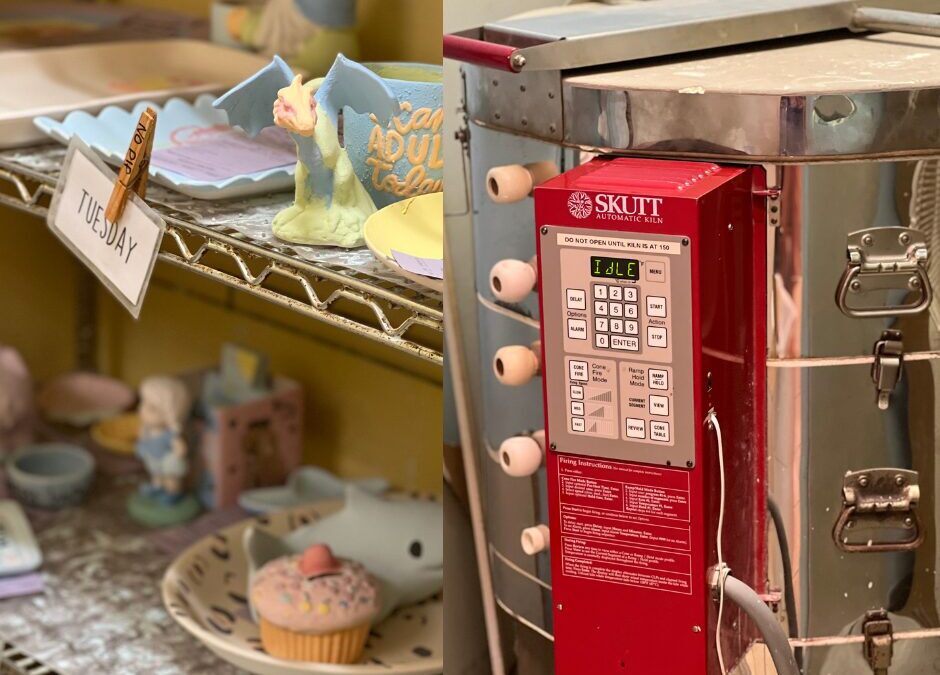
Step-by-Step Guide to Pottery Painting Pottery.
While many people are familiar with the concept of paint-your-own-pottery, a lot of folks don’t know what goes on behind the scenes after you leave the studio. Keep reading for the complete guide on
everything PYOP.
When you arrive at your local studio, you’re greeted with rows of unfinished pottery waiting to be painted. These pieces are bisque pottery, meaning they have been fired once and are ready to be glazed.
These pieces were made in molds, fired, and shipped to your studio. They are very dry and porous, so they absorb moisture quickly. You will notice this as you paint, and your glazes seem to dry almost
instantly on the first coat.
While glazing, it is important to keep in mind that glazes work best in layers. For an opaque color, three thin coats of glaze will work best. Too few layers will be sheer, and too many layers will force the glaze to resist away from the piece during firing. This is called crawling. After you paint your piece, you must leave it at the studio and pick it up another time. But why? Because the glazing processes are far from finished. The glazes you used are called underglaze. They will turn shiny and vibrant after firing, but only the painted areas will be sealed. So, studios let the underglazes dry for 24 hours. Then, each piece is dipped by hand in an overglaze. This functions similarly to a topcoat with nail polish; The whole piece will be shiny and sealed, making it food-safe and more
pleasant to touch. This overglaze needs another 24 hours to dry before it can go in the kiln.
Once all the glazing processes are complete, each item needs to be fired in the kiln. Glazes are made up of very fine pieces of glass, that will melt in the kiln and rebond shiny and hard. Each item needs
to be put on what we call stilts, little ceramic pieces with metal stakes, so they do not get fused to the kiln shelves. Kilns need to heat, fire, and cool down, a process which usually takes about 36 hours. After it is
complete, the kiln is emptied by hand, which takes some time. Then, a hand dremmel or bit of sandpaper is used to smooth out any bumps left from the stilts.
And finally, it is time to pick up your piece! A lot of work goes into making sure your piece is properly cared for, and that is why it often can take a week before you can pick it up. But then, you get a
lifetime to cherish it.

